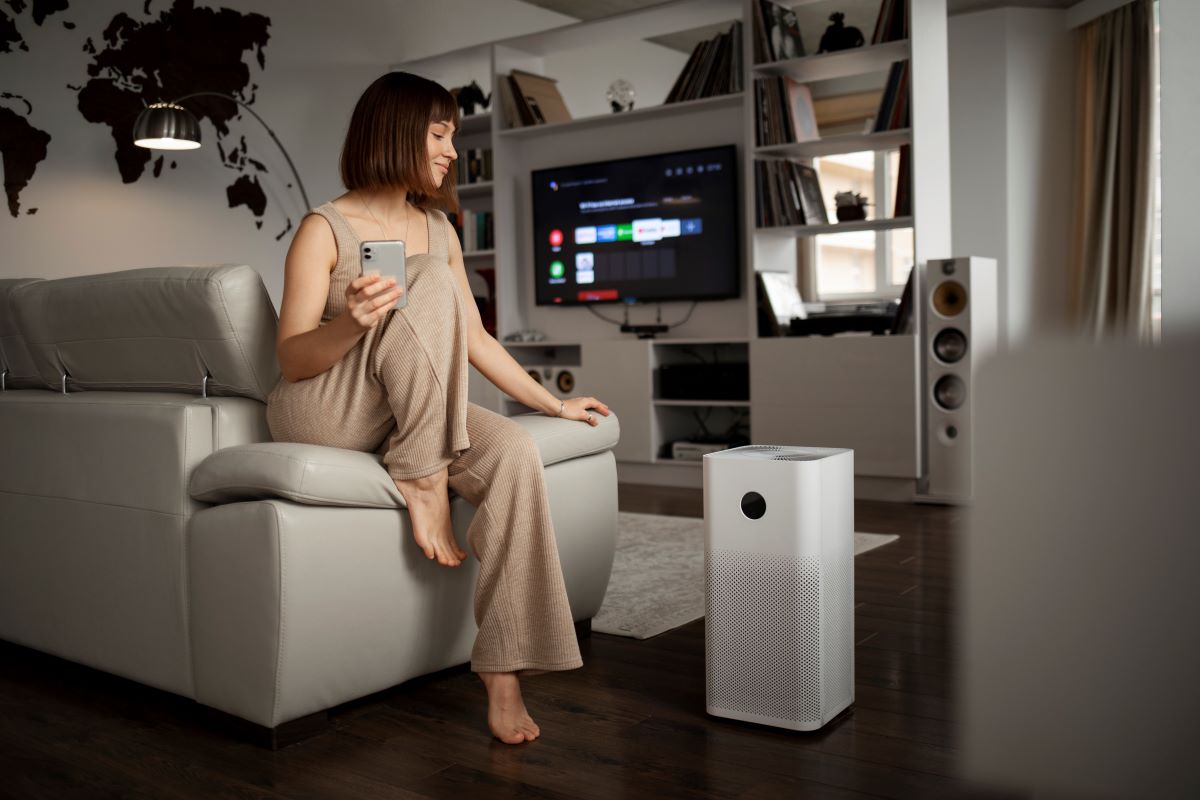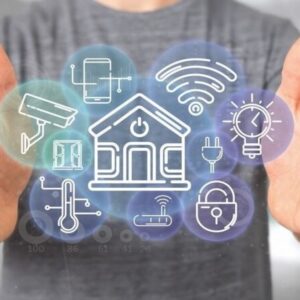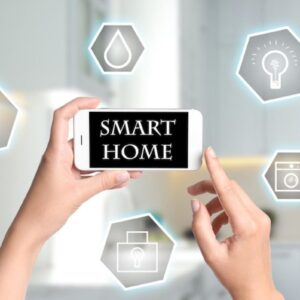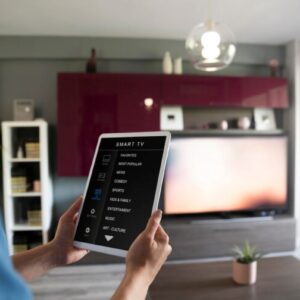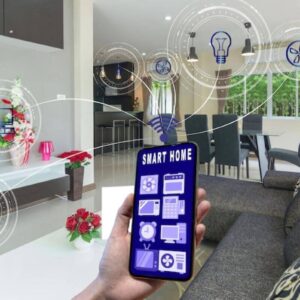Introduction
Definition of Smart Homes
In the modern era, the term “smart home” has become increasingly ubiquitous, referring to residences equipped with advanced automation systems and technologies to enhance the residents’ quality of life. Smart home innovations integrate various devices and systems that can be controlled remotely, often through a central hub or mobile app. These technologies aim to make homes more efficient, secure, and convenient.
Brief Overview of the Evolution of Home Automation
The concept of home automation has roots dating back to the 20th century, but it gained momentum with the advent of digital technologies. Early home automation systems were basic, focusing on tasks such as lighting and heating control. The evolution accelerated with the rise of the Internet of Things (IoT), enabling seamless connectivity and communication between devices. Today, smart homes boast an array of interconnected devices, creating a futuristic living experience.
The Current State of Smart Homes
Statistics on the Adoption of Smart Home Technologies
As technology continues to advance, the adoption of smart home technologies has witnessed a significant upswing. According to recent statistics, a substantial percentage of households globally have embraced smart home solutions. The growth is attributed to the increasing affordability and accessibility of these technologies, making them more appealing to a broader demographic.
Popular Smart Home Devices and Systems
Smart home devices span a wide range, catering to diverse needs and preferences. From smart thermostats that optimize energy consumption to intelligent security systems with cameras and sensors, the market is teeming with innovations. Virtual assistants like Amazon’s Alexa and Google Assistant have become central to smart homes, serving as voice-activated hubs for controlling various devices.
Testimonials or Case Studies Showcasing Successful Implementations
Real-world success stories underscore the transformative impact of smart home technologies. Case studies of homeowners who have seamlessly integrated these innovations often highlight improved energy efficiency, enhanced security, and simplified daily routines. Such testimonials serve as powerful endorsements, encouraging others to explore the benefits of smart living.
Key Components of Smart Home Innovations
Overview of Internet of Things (IoT) in Homes
At the heart of smart homes lies the Internet of Things (IoT), a network of interconnected devices sharing data seamlessly. In the context of smart homes, IoT enables devices like thermostats, lights, and security systems to communicate and collaborate. This interconnectedness forms the backbone of smart living, allowing for centralized control and automation.
Smart Appliances and Devices
The proliferation of smart appliances has revolutionized household tasks. From refrigerators that can create shopping lists to washing machines that operate based on optimal energy usage, these devices contribute to a more streamlined and efficient home. The integration of smart technology into everyday appliances enhances functionality and provides users with unprecedented convenience.
Integration of AI and Machine Learning
Artificial Intelligence (AI) and machine learning algorithms play a pivotal role in smart home innovations. These technologies enable devices to learn and adapt to user behavior, creating a personalized and intuitive experience. From predicting temperature preferences to optimizing energy consumption patterns, AI enhances the efficiency and responsiveness of smart home systems.
Role of Voice Control in Smart Living
Voice-activated control has emerged as a user-friendly interface for smart homes. Virtual assistants, powered by sophisticated natural language processing, allow users to command and manage various devices using voice commands. This hands-free approach adds a layer of convenience, especially for individuals with mobility challenges.
Advancements in Home Automation
Emerging Technologies Shaping the Future
The landscape of home automation is continuously evolving, driven by cutting-edge technologies. Augmented Reality (AR) and Virtual Reality (VR) are poised to redefine the way users interact with their smart homes. AR applications could provide real-time information about energy usage or system status when users point their smartphones or AR glasses at specific devices.
The Impact of 5G on Smart Home Connectivity
The advent of 5G technology is set to revolutionize smart home connectivity. With its ultra-fast speeds and low latency, 5G ensures swift and reliable communication between devices. This not only enhances the responsiveness of smart home systems but also enables the seamless integration of a multitude of devices, fostering a more interconnected and intelligent living environment.
Sustainable and Eco-Friendly Innovations
As environmental concerns take center stage, smart home technologies are aligning with sustainability goals. Innovations include energy-efficient devices, smart lighting that adjusts based on natural light, and water management systems that optimize consumption. These eco-friendly solutions not only reduce the environmental impact but also contribute to cost savings for homeowners.
Enhancing Security and Privacy
Smart Home Security Systems
Security is a paramount concern for homeowners, and smart home technologies offer robust solutions. Smart security systems encompass features such as motion sensors, surveillance cameras, and smart door locks. These devices can be monitored and controlled remotely, providing homeowners with real-time updates on their property’s security status.
Data Security Measures in Smart Homes
With the increasing connectivity of devices, safeguarding personal data becomes imperative. Smart home manufacturers prioritize data security through encryption protocols and secure authentication methods. Regular software updates and patches are crucial to addressing vulnerabilities and ensuring that users’ sensitive information remains protected.
Privacy Considerations and Best Practices
The collection of data by smart devices raises privacy concerns. Establishing clear privacy policies, giving users control over their data, and anonymizing information whenever possible are key practices. Educating users about the data collected and its purpose fosters transparency and trust. Striking the right balance between convenience and privacy is essential for the widespread acceptance of smart home technologies.
Efficiency and Convenience in Smart Living
Energy-Efficient Solutions
Smart homes contribute to energy conservation through innovative solutions. Smart thermostats optimize heating and cooling based on occupancy, and smart lighting systems adjust brightness according to natural light and user preferences. These energy-efficient practices not only reduce environmental impact but also lead to substantial cost savings for homeowners.
Automation of Daily Tasks
One of the defining features of smart homes is the automation of routine tasks. From setting the perfect morning temperature to brewing coffee before waking up, smart home systems can be programmed to handle a myriad of tasks. This level of automation not only saves time but also enhances overall convenience, allowing homeowners to focus on more meaningful aspects of their lives.
Remote Home Management and Control
The ability to control and monitor the home remotely is a hallmark of smart living. Through mobile apps or web interfaces, homeowners can check security camera feeds, adjust thermostat settings, and even control home entertainment systems from anywhere with an internet connection. This remote management capability provides unparalleled flexibility and peace of mind.
The User Experience in Smart Homes
Personalization and Customization Options
Smart homes are designed with user preferences in mind. Personalization options allow homeowners to tailor their smart home experience to meet their unique needs. Whether it’s setting custom lighting scenes, adjusting the behavior of smart thermostats, or creating voice commands for specific tasks, personalization enhances the user experience.
User-Friendly Interfaces
The success of smart home technologies hinges on user-friendly interfaces. Manufacturers prioritize intuitive design, ensuring that even those less tech-savvy can easily navigate and control their smart devices. Touchscreens, mobile apps, and voice commands contribute to seamless interactions, making the adoption of smart technologies accessible to a broader audience.
Improving the Overall Quality of Life
Ultimately, the integration of smart technologies aims to enhance the overall quality of life for homeowners. By automating mundane tasks, increasing energy efficiency, and providing advanced security features, smart homes empower residents to lead more comfortable, convenient, and secure lives. The positive impact extends beyond the practical benefits, influencing the emotional well-being of homeowners.
Future-Proofing Your Home
Upcoming Trends in Smart Home Technologies
Staying abreast of upcoming trends is crucial for future-proofing your smart home. Technologies such as edge computing, which processes data closer to the source, and advanced sensor technologies are poised to shape the next phase of smart home evolution. Keeping an eye on these trends ensures that your home remains at the forefront of technological innovation.
Recommendations for Long-Term Planning
Long-term planning involves considering the scalability and compatibility of smart home systems. As technology evolves, new devices and standards emerge. Homeowners should choose devices and platforms with a focus on interoperability, ensuring that future additions seamlessly integrate with existing systems. Regularly updating software and firmware also contributes to the longevity of smart home setups.
Adapting to Evolving Innovations
Flexibility is key when it comes to adapting to evolving innovations. Smart homes should be designed with upgradeability in mind. Whether it’s adding new devices or integrating emerging technologies, a well-thought-out infrastructure allows homeowners to stay ahead of the curve. This adaptability ensures that the smart home remains cutting-edge and relevant over the years.
Challenges and Solutions
Common Challenges in Smart Home Implementation
Despite the numerous advantages, smart home implementation comes with its share of challenges. Interoperability issues between devices from different manufacturers, security concerns, and potential system malfunctions are common hurdles. Additionally, user resistance to adopting new technologies and the initial investment costs can pose challenges to widespread adoption.
Solutions and Strategies for Overcoming Obstacles
Addressing interoperability issues requires standardization and collaboration among industry stakeholders. Manufacturers adopting open standards can ensure that their devices work seamlessly with others. Robust cybersecurity measures, regular software updates, and user education contribute to overcoming security concerns. To mitigate user resistance, manufacturers and service providers can focus on user-friendly interfaces, clear communication about benefits, and gradual adoption strategies.
Benefits of Embracing Smart Home Innovations
Improved Efficiency and Resource Management
The overarching benefit of embracing smart home innovations is the marked improvement in efficiency and resource management. Smart technologies optimize energy consumption, reduce waste, and streamline daily tasks, resulting in a more efficient use of resources. This not only benefits the environment but also translates into significant cost savings for homeowners over time.
Enhanced Security and Safety
Smart home security systems provide a heightened level of safety, offering real-time monitoring and instant alerts. From smart doorbell cameras that allow visual verification of visitors to sensors that detect unusual activity, these technologies contribute to a secure living environment. Enhanced security features not only protect property but also provide peace of mind for homeowners.
Potential Cost Savings
While the initial investment in smart home technologies may seem substantial, the potential for long-term cost savings is considerable. Energy-efficient practices lead to reduced utility bills, and the automation of tasks can save time and effort. Additionally, smart home technologies may contribute to the early detection of issues, preventing costly repairs in the long run.
Conclusion
In conclusion, the evolution of smart homes represents a transformative journey from basic home automation to a sophisticated ecosystem of interconnected devices and intelligent systems. The current state of smart homes reflects a widespread adoption driven by the increasing availability and affordability of innovative technologies.

